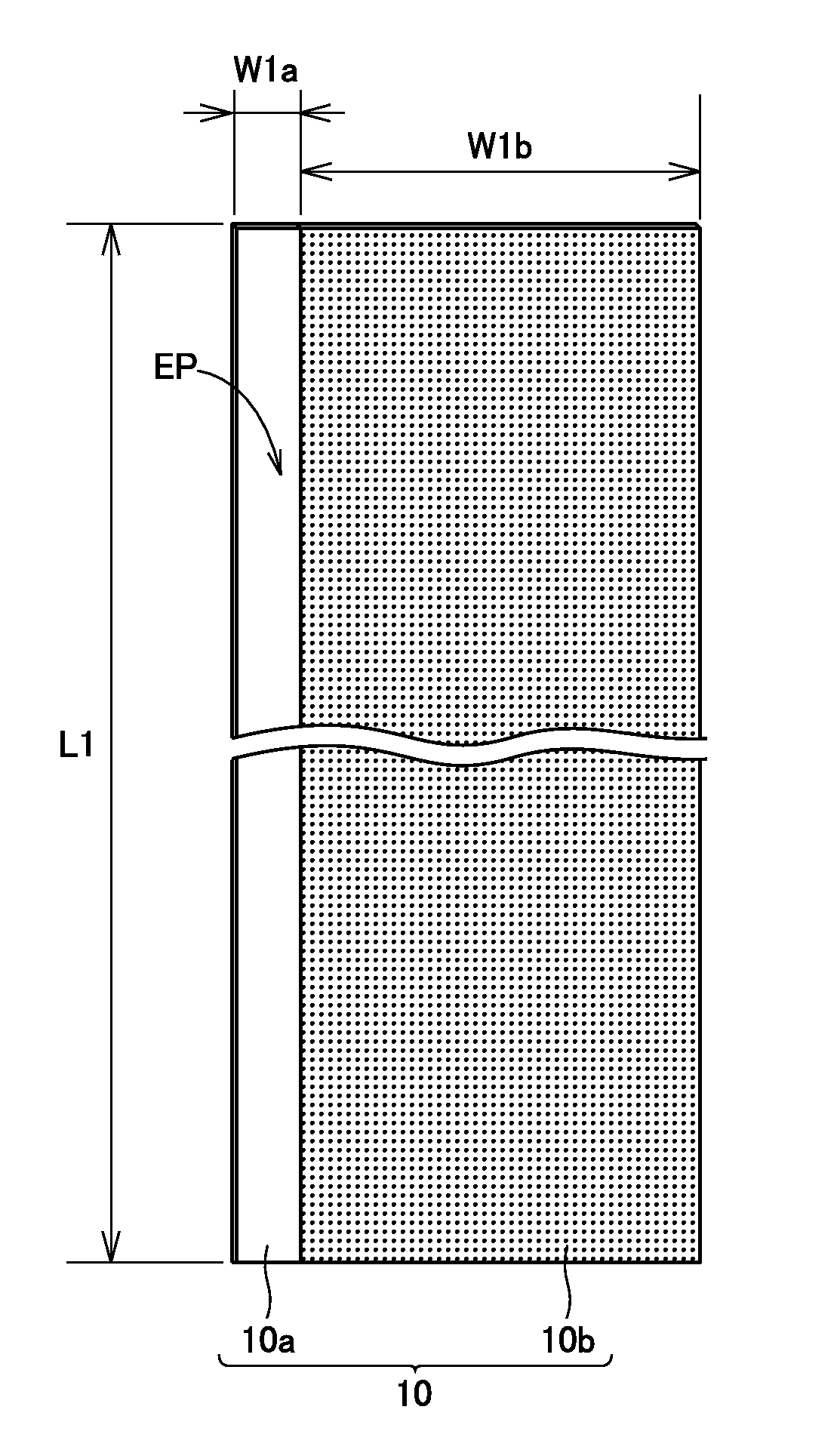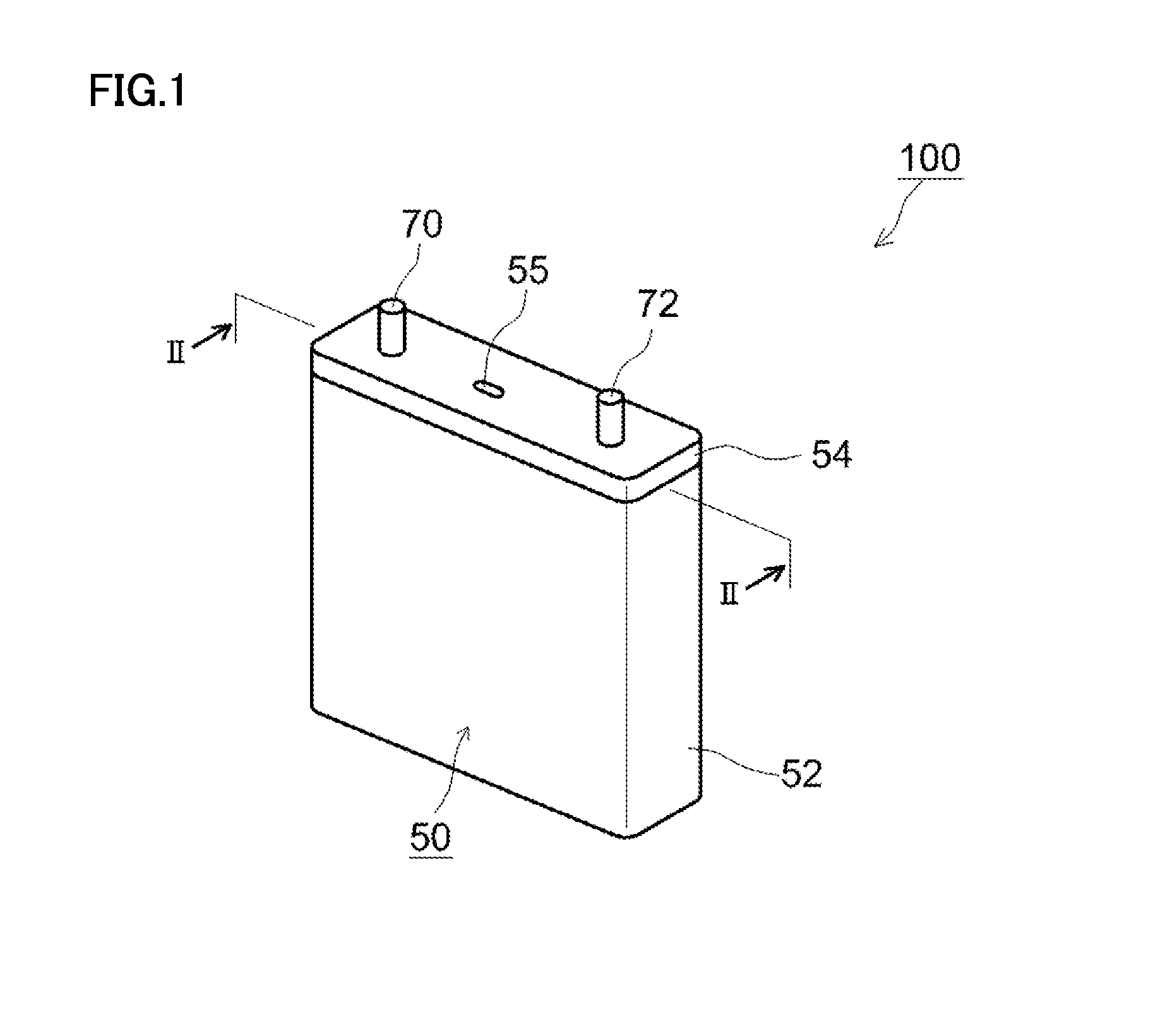Non-aqueous electrolyte secondary battery
a secondary battery and non-aqueous electrolyte technology, applied in secondary cells, battery servicing/maintenance, cell components, etc., can solve the problems of difficult to ensure the amount of generated gas, deterioration of the non-aqueous electrolyte secondary battery, etc., to prevent overcharge
- Summary
- Abstract
- Description
- Claims
- Application Information
AI Technical Summary
Benefits of technology
Problems solved by technology
Method used
Image
Examples
example
[0088]The present embodiment will be described in more detail hereinafter with reference to an example, while the present embodiment is not limited thereto.
[0089][Experimental Method]
[0090]A laminate-type battery, conditions of an overcharge test, and a method for evaluating an amount of generated gas that are common to Experiment 1 to Experiment 3 described below will be first described.
[0091]
[0092]In the present experiment, the laminate-type battery (rated capacity: 25 Ah) was used to measure the amount of generated gas at the time of overcharge. This laminate-type battery is similar to the rectangular battery described as the embodiment, except that the laminate-type battery does not include a pressure-type CID and a package thereof is a laminate film.
[0093](Fabrication of Positive Electrode Plate)
[0094]Referring to FIG. 4, positive electrode plate 10, which was a long strip-like sheet member and had core exposed portion EP at one side end in the shorter-side direction, was fabri...
PUM
| Property | Measurement | Unit |
|---|---|---|
| porosity | aaaaa | aaaaa |
| porosity | aaaaa | aaaaa |
| pressure | aaaaa | aaaaa |
Abstract
Description
Claims
Application Information
 Login to View More
Login to View More - R&D
- Intellectual Property
- Life Sciences
- Materials
- Tech Scout
- Unparalleled Data Quality
- Higher Quality Content
- 60% Fewer Hallucinations
Browse by: Latest US Patents, China's latest patents, Technical Efficacy Thesaurus, Application Domain, Technology Topic, Popular Technical Reports.
© 2025 PatSnap. All rights reserved.Legal|Privacy policy|Modern Slavery Act Transparency Statement|Sitemap|About US| Contact US: help@patsnap.com



